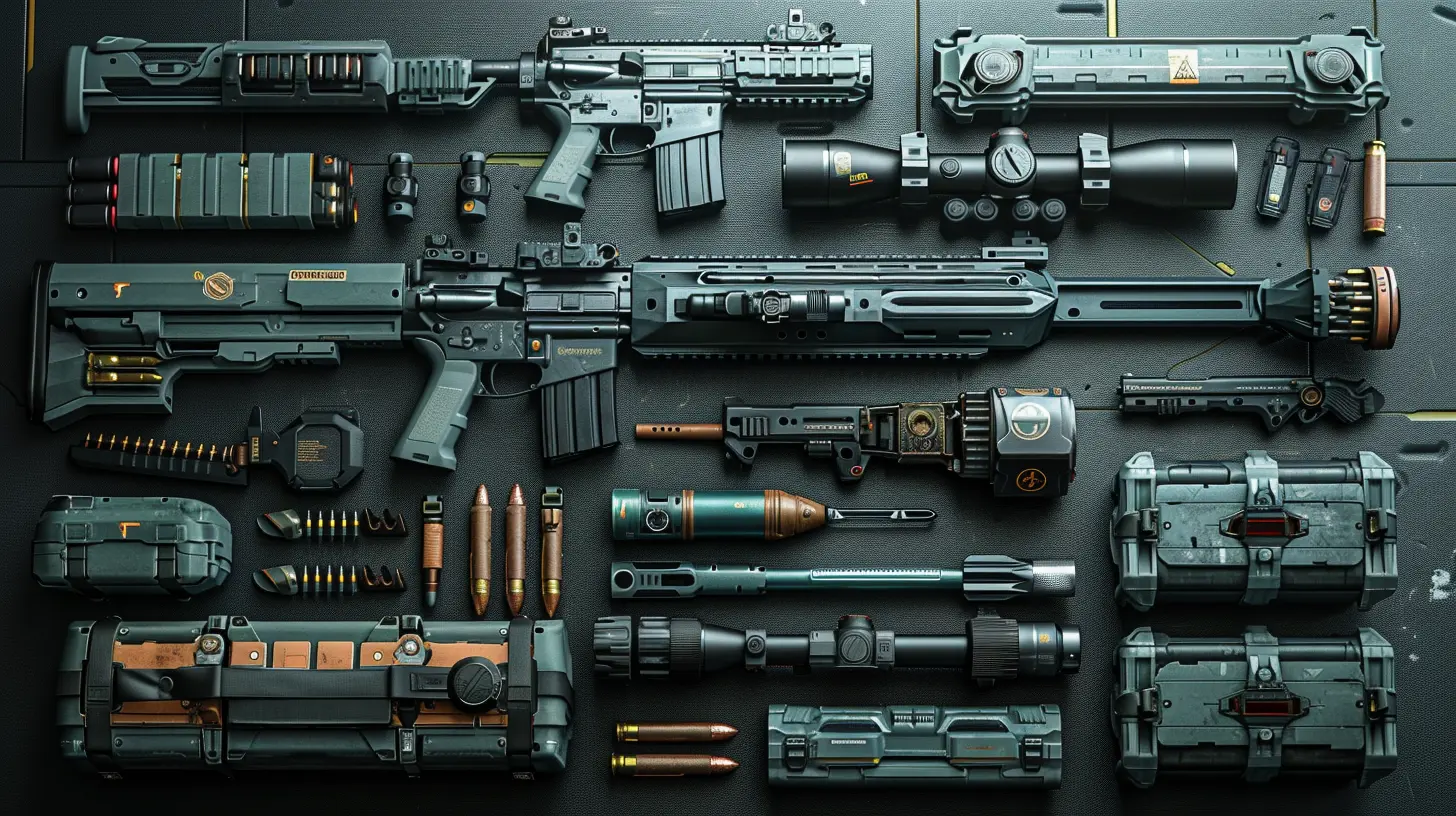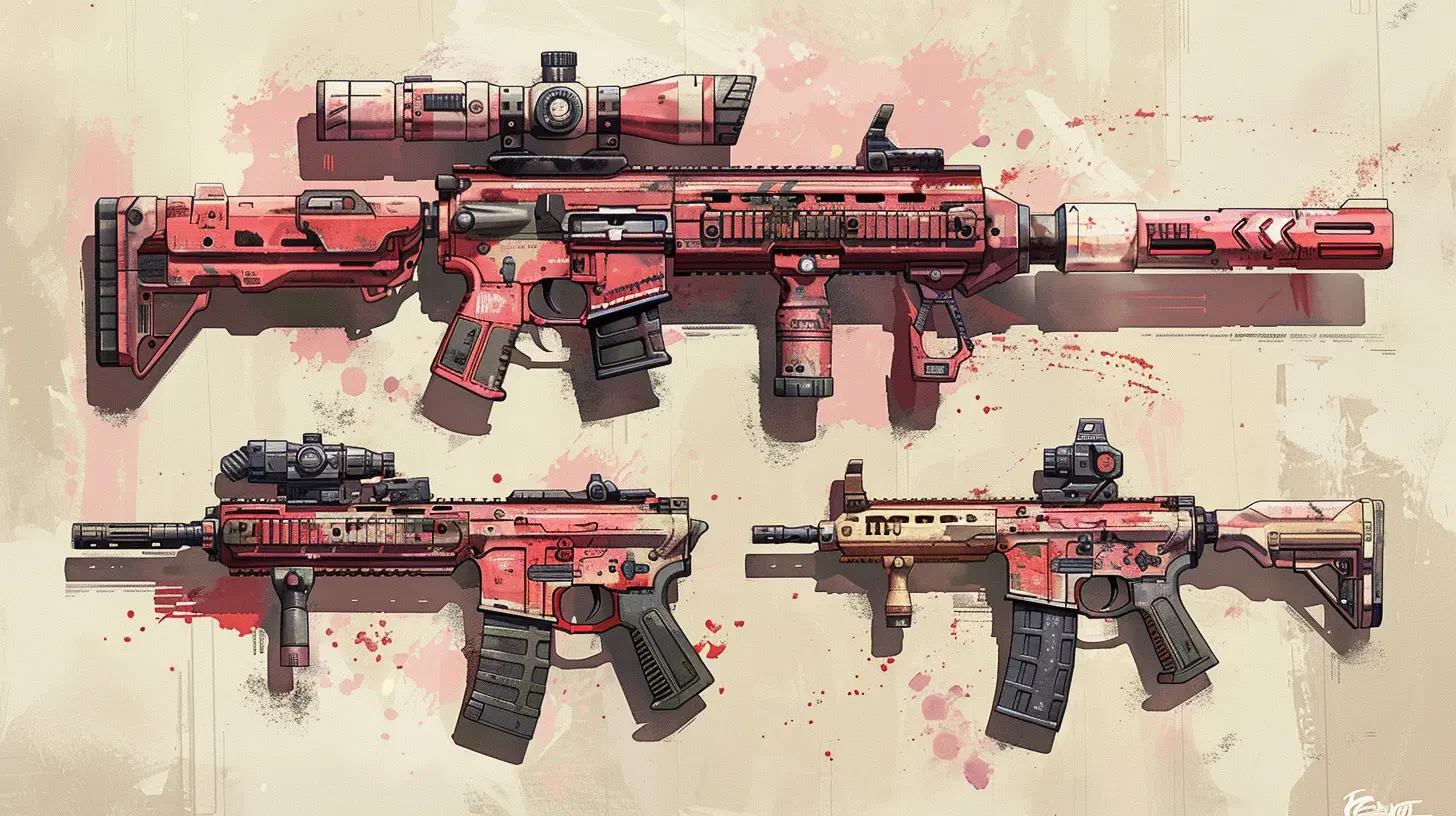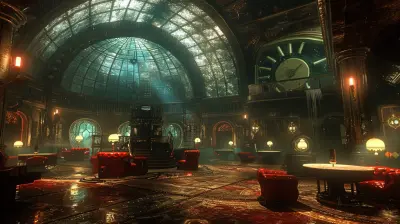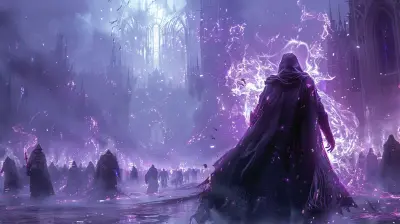Themes and Trends in Modern Weapon Customization
19 June 2025
Modern weapon customization has become a massive part of gaming culture—and honestly, it’s no surprise why. Games have evolved far beyond just running and gunning; they now let players tweak, mod, and personalize their weaponry in mind-blowing detail. Whether you're loading up in Call of Duty, dialing in a sniper loadout in Battlefield, or crafting fantasy arms in RPGs like Destiny 2, weapon customization has become more than just a feature… it’s practically an obsession.
So let’s dive into the core themes and current trends driving this evolution. What’s hot in the world of weapon customization? What are developers doing to keep things fresh and exciting? And more importantly—why does it matter so much to us as players?
The Core Idea Behind Weapon Customization
Before we zoom in on the trends, let’s get one thing straight: weapon customization isn’t just about aesthetics—it’s about expression, strategy, and identity.Think of your gun like your gaming avatar’s handshake. It says a lot about you before you even fire that first shot. Are you a stealthy player using suppressed weapons and camo skins? Or are you loud, proud, and rocking some neon skin that lights up like a disco ball?
Weapon customization lets us decide how we play and how we’re perceived in-game. And it works hand-in-hand with gameplay mechanics to create meaningful choices.
Personalization is King
Skins & Visual Mods
Let’s start with the obvious: skins. Weapon skins are the flashy outer coats we slap on our firearms. They don’t necessarily change how a weapon performs, but boy do they help it stand out.Games like CS:GO and Valorant have practically built micro-economies around skin systems. Some skins sell for thousands (yes, THOUSANDS) of dollars. That's how deep the customization rabbit hole goes.
But it’s not just about value—it’s about self-expression. Weapon skins can reflect a player’s mood, allegiance (like faction colors in Apex Legends), or even their skill level (legendary skins earned through ranked rewards).
Stickers, Charms, and Other Swag
Weapon charms, decals, and stickers might seem like small things, but they play a big role in personalization. Think of them like bumper stickers for your digital death-dealer.Games like Rainbow Six Siege have embraced this fully. You can slap on little keychains, emblems, and even holiday-themed charms—because, why not? It keeps things fun.
Performance Customization: More Than Just Looks
Alright, let's get serious here. While skins are great and all, nothing feels more satisfying than perfectly tuning your weapon to match your playstyle.Attachment Systems
Attachments are the bread and butter of performance customization. We’re talking scopes, barrels, grips, stocks, extended mags—the whole works.In games like Call of Duty: Warzone or Modern Warfare II, the Gunsmith system lets you tweak almost every part of a weapon. You can sacrifice recoil control for increased damage, swap out laser sights for red dots, or even change firing modes altogether.
It’s like tuning a race car for a specific track. You’re not just picking what’s "best," you're crafting what’s right for YOU.
Loadouts and Modular Builds
The modern trend moves towards modularity—basically giving you LEGO-style control over how your weapon is built.Escape from Tarkov is a prime example. It doesn’t just allow you to swap out attachments; it makes you think about weight, ergonomics, even the real-world manufacturer of each part.
This level of depth is crazy detailed, and while it can be overwhelming for casuals, it’s a goldmine for hardcore players who love optimization.
Realism vs. Imagination: Walking the Line
This is a constant tug-of-war in modern games: how realistic should weapon customization be?Hyperrealism
Some games go all-in on authenticity. Think Arma, Tarkov, or even the more tactical modes of Battlefield.These titles focus on ballistics, part durability, realistic attachment effects, and even weight distribution. It's not about looking cool—it's about staying alive. Every choice you make has a consequence.
Gamers who love immersion eat this up. When you have to think like a real soldier, those choices become ten times more meaningful.
Fantasy & Sci-Fi Customization
On the flip side, you’ve got games like Destiny, Warframe, or Borderlands—where the rules of reality are thrown out the window.Here, weapon customization goes WILD. You’re talking elemental damage types, magical effects, glowing runes, and guns that literally talk to you. Customization is less about tactics and more about style, spectacle, and narrative.
In a way, both ends of the spectrum serve the same goal: make the player feel empowered and unique. One just does it with polish and realism, the other with unicorn lasers and explosions.
Meta-Driven Choices: Following the Trends
Let’s be honest—sometimes we don’t customize our weapons for fun. Sometimes we do it to win.The Power of the Meta
"Meta" (Most Effective Tactic Available) drives a lot of loadout decisions in online shooters. When a certain gun setup starts dominating, the whole player base tends to follow suit.This gives birth to trends like shotgun-mania in Apex, sniper loadouts in Warzone, or the dreaded SMG builds in Fortnite.
Developers try to balance things, but metas always emerge. And when they do, players scramble to customize their gear accordingly.
Seasonal and Time-Limited Gear
Games love to drop limited-time customization options—whether through battle passes, holiday events, or seasonal challenges.That means players are always chasing the next cool skin, attachment, or blueprint weapon. It’s FOMO at its finest, but hey—it works.
Monetization & Microtransactions
We can’t talk about modern weapon customization without touching the big money question.Cosmetics as Currency
Free-to-play models rely heavily on cosmetic customization to make money. And weapon skins are a huge part of that.Players will happily drop 10 bucks for that sexy gold camo or anime-wrapped assault rifle, even if it doesn’t boost performance. Because having a sweet-looking gun feels like a reward in itself.
Pay-to-Win Problems
Here’s where the line gets blurry. Some games offer "blueprint" weapons or paid attachments that offer slight stat boosts—skating dangerously close to pay-to-win territory.This trend has gathered criticism, and rightly so. When your wallet gives an edge over skill, the community pushes back hard.
The best approach is offering customization without affecting balance. Let players pay for style, but make them earn power.
Community-Generated Content
Here’s a cool twist: some games let players create and share custom weapon skins or builds.Modding Culture
Games like Counter-Strike and Garry’s Mod have long supported user-generated weapon content. Lately, more mainstream games are starting to embrace it.Having players create skins, sound packs, or custom attachment combos brings endless variety—and some of the most creative stuff comes from the fans, not the devs.
User Feedback Driving Customization Changes
Developers are now more tuned-in to what players want. That’s why you’ll see frequent balance patches, community polls, feedback forums, and even fan-voted skins.The relationship between players and devs has never been more crucial in shaping weapon systems.
Future Trends: What’s Next?
So where’s all this heading? Let’s take a shot at predicting the next phase of weapon customization.AI-Assisted Customization
Imagine loading up your weapon and an AI assistant recommends the best attachments based on your play history. Sounds crazy? Give it a year or two—it’s coming.VR Weapon Building
In VR shooters, assembling your weapon piece-by-piece by physically snapping on parts? That’s already happening in games like Pavlov VR and Boneworks. Expect this to explode as VR gets more mainstream.NFT Skins & Blockchain Gear
Love it or hate it, blockchain-based gear ownership is a rising conversation. Imagine owning a one-of-a-kind weapon skin that you can trade or even lease out to other players. It’s controversial, but it’s definitely on the horizon.Wrapping It All Up
Weapon customization has grown from a niche feature to a core gameplay pillar. It gives us freedom, identity, and sometimes even a competitive edge.Whether you’re here for the flashy skins, fine-tuning your DPS output, or just slapping stickers on your favorite shotgun—there’s something deeply satisfying about making a weapon your own.
Modern games know this. And they’re not just letting us play—they’re letting us create, personalize, and evolve. One customized round at a time.
all images in this post were generated using AI tools
Category:
Weapon CustomizationAuthor:

Stephanie Abbott
Discussion
rate this article
2 comments
Charlie Gutierrez
This article insightfully explores the evolving landscape of weapon customization in gaming. It highlights how player expression and gameplay mechanics intertwine, showcasing innovative trends that enhance immersion and strategy. A must-read for enthusiasts looking to understand the future of weapon personalization!
June 20, 2025 at 4:47 AM

Stephanie Abbott
Thank you for your thoughtful comment! I'm glad you found the article insightful and relevant to the future of weapon personalization in gaming.
Adrian Riley
Fascinating article! I'm intrigued by how weapon customization reflects players' personalities. What do you think drives the most popular trends—game mechanics, aesthetic choices, or community influence? I’d love to hear more about this dynamic!
June 19, 2025 at 4:45 AM

Stephanie Abbott
Thank you for your insightful comment! I believe all three factors—game mechanics, aesthetic choices, and community influence—play a significant role, often intertwining to shape trends in weapon customization. This dynamic creates a rich environment where player identity can flourish.


